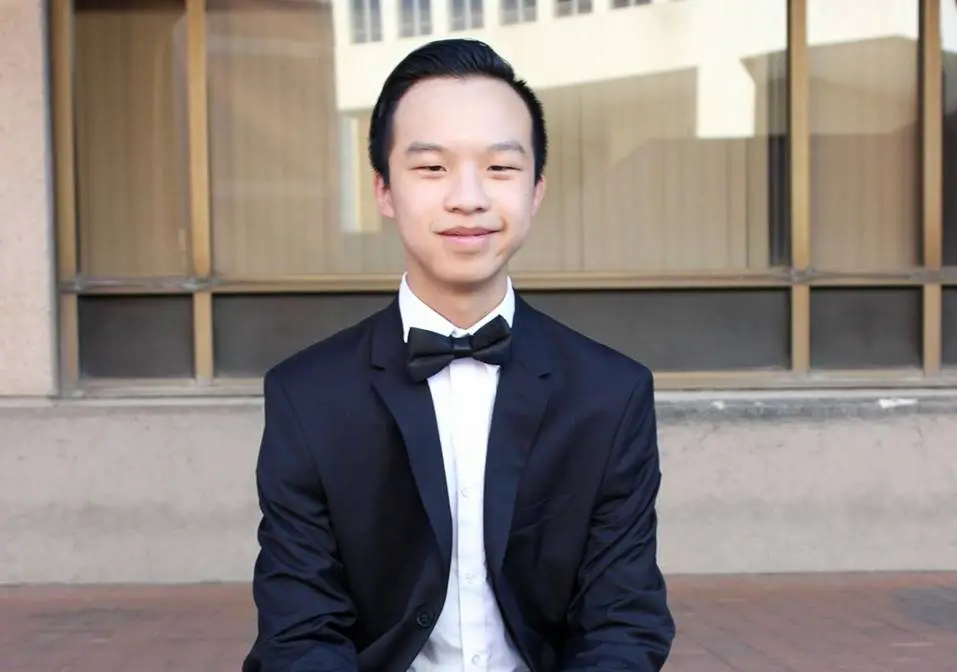Stanley Wong, a 19-year-old first-year student at the University of Arizona, took the initiative to improve his community and campus usage of energy. Though his time at UA has been short, he is using it most efficiently by helping install solar panels in his school. These solar panels will not only reduce the usage of fossil fuels that UA uses but also serve as a test for application of solar energy into agriculture.
Wong is currently the Chair of the Energy and Climate Committee for Students of Sustainability and is striving to bring a more sustainable life to his campus. He believes these changes will benefit his school and allow others students to see that sustainable lifestyles the future.
The freshmen with double majors in chemical engineering and environmental engineering found his passion for sustainable energy through his childhood experience. His journey in renewable energy began at the age of six when employees of a recycling plant came to his elementary classroom.
During this, they taught him and his fellow students about why it is necessary to recycle and how to do so. This brief meeting sparked an obsession in him as he became enthralled by the idea of taking care of the environment. He soon began to wonder, “The environment is beautiful, why would anyone want to destroy it?”
After high school, Wong attended Arizona University with the help of the Finn Scholarship, which is given out to 20 of Arizona’s highest achieving high school students. There he was able to follow his passion for sustainable energy by joining the Energy and Climate Committee for Students of Sustainability.
When the committee’s chair resigned in October 2017, Wong assumed the position and took the charge in transforming the university’s energy usage.
Managing a committee while still attending full time is not an easy task. To Wong, time management is key to balancing his work at the committee and his study.
“There are times you have to pick and choose what you want to spend more time and effort on but I also believe (this project) is possible,” he says. “I’m also in a sustainable major so I can think of sustainability at the same time as learning.”
Wong is currently a leader in the effort to bring solar panels to the Environment and Natural Resources 2 building on his campus. As the committee chair, he strives to make it a team effort by engaging other members of the facility and organizations on campus. The project is also an attempt to attract more attention to the idea of agrivoltaic in Arizona.
Agrivoltic brings together solar technology and agriculture, or in more layman’s term, uses solar panels to help grow food. According to Wong, the placement of these solar panels will help a garden below them to flourish.
At first glance, this project is just a way to reduce fossil fuels. However, it is, in fact, an effort to help bring more ideas about solar energy and agricultural development to the state.
Wong believes that the problem with solar energy is that the best results come from solar farms, which take away land and space for agriculture. However, combining solar farms with agricultural ones will solve this issue. This new approach toward solar energy and agriculture can really make a difference in the social acceptance of this sustainable energy.
“This could potentially show that the two aren’t mutually exclusive, you can have agricultural space and solar farms in the same plot of lands,” Wong said. Although this is just a potential, he hopes that success in his small-scale project will lead to wider application of the idea on larger scales.
Another goal of these solar panels is to make a political statement and endear renewable energy to everyone. “Its kinda just revitalizing solar energy efforts, since 2012 we (Arizona University) haven’t had a solar panel. So it’s making a statement with the new president, solar panels are cool!”
Wong is focused on bringing attention to the issue of renewable energy, and if his project is successful he will be making a bold statement to its naysayers.
Wong admits that he had two big challenges when developing this project: his status as a freshman and finances. As a freshman, Wong was not taken seriously at first, yet he managed to convince people with his passion and dedication. The main challenge, though, was getting together with various groups on campus and finding funding for the project.
The project would cost around $132,000; however, it would potentially save $101,388 within 20 years. The group did get sizable funding from Arizona University business affairs office, but they are still currently seeking for more support. If funding for the project is approved, Wong expects to see the panels be installed by November 2018.
This would be Wong’s first program of this magnitude, and this is a project is built from The UA Community Schools and Garden program. Yet, Wong is certainly a central person in the project as he helped write the Green Fund grant proposal, which will hopefully be convincing enough to provide the necessary capital the undertaking needs.
Wong’s passion for sustainable living is his main drive against all the challenges in carrying out this project. “It’s not just our planet, it’s our future generations so whenever we make sustainable actions it has multiple facets. First of all, it’s helping remediate the issues of the past, it’s helping to improve our conditions in the future and it’s ensuring that our future generations have a place to live.”
Wong also believes that cleaner live styles are the future and hopes more students join sustainability. He says, “going green is going great!” Wong hopes to bring a cleaner future to the next generation by helping and engineering future projects like this, and this project is just the start of his journey.

















